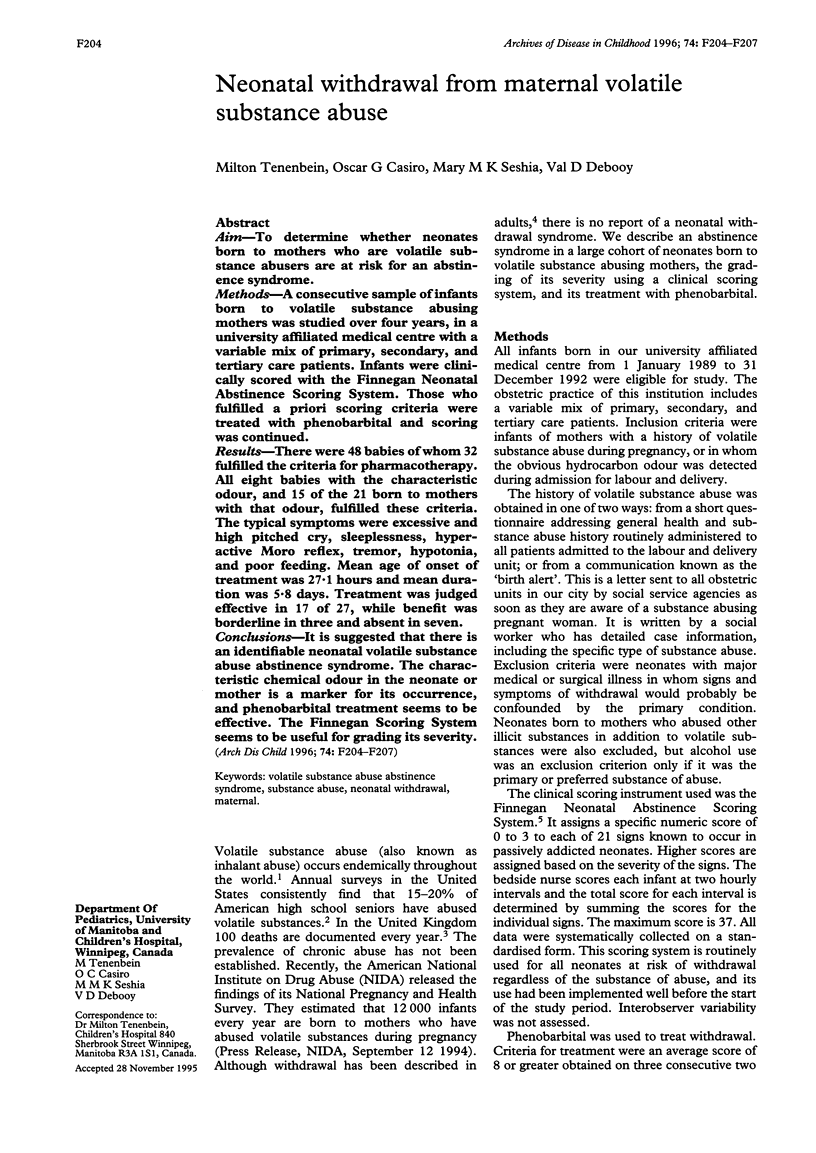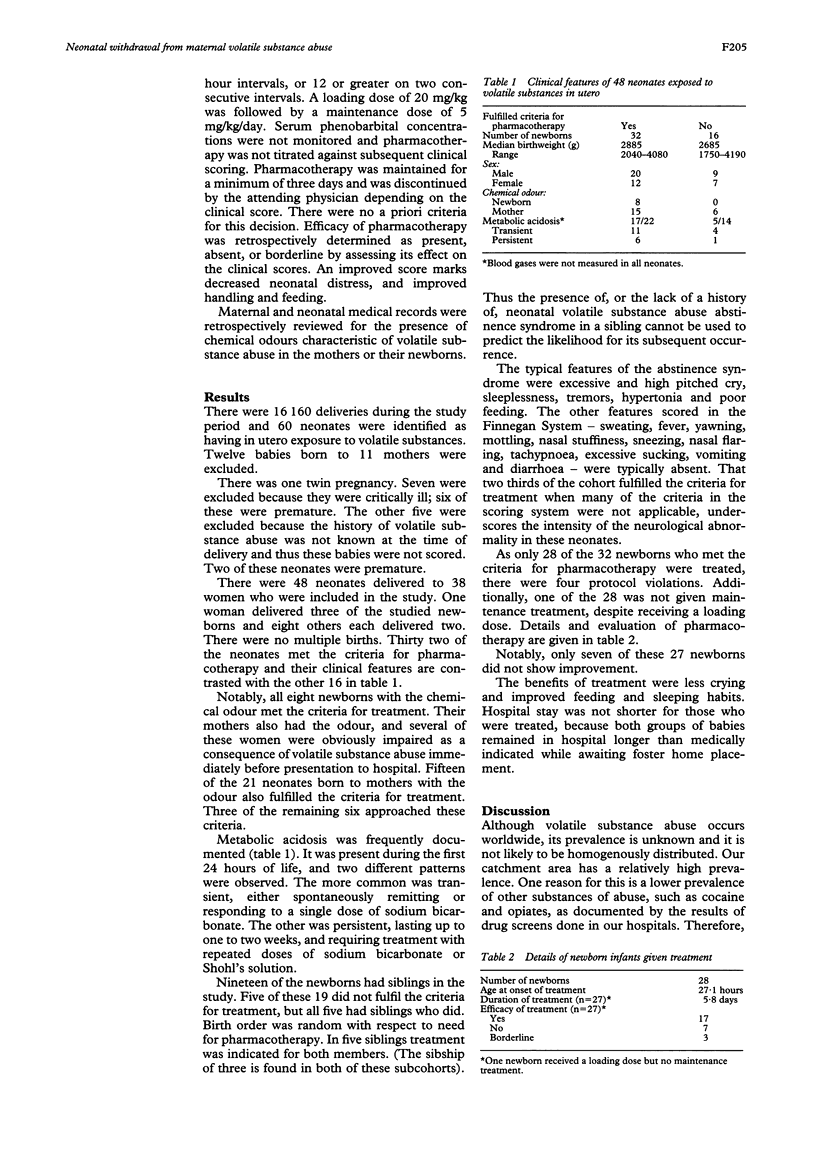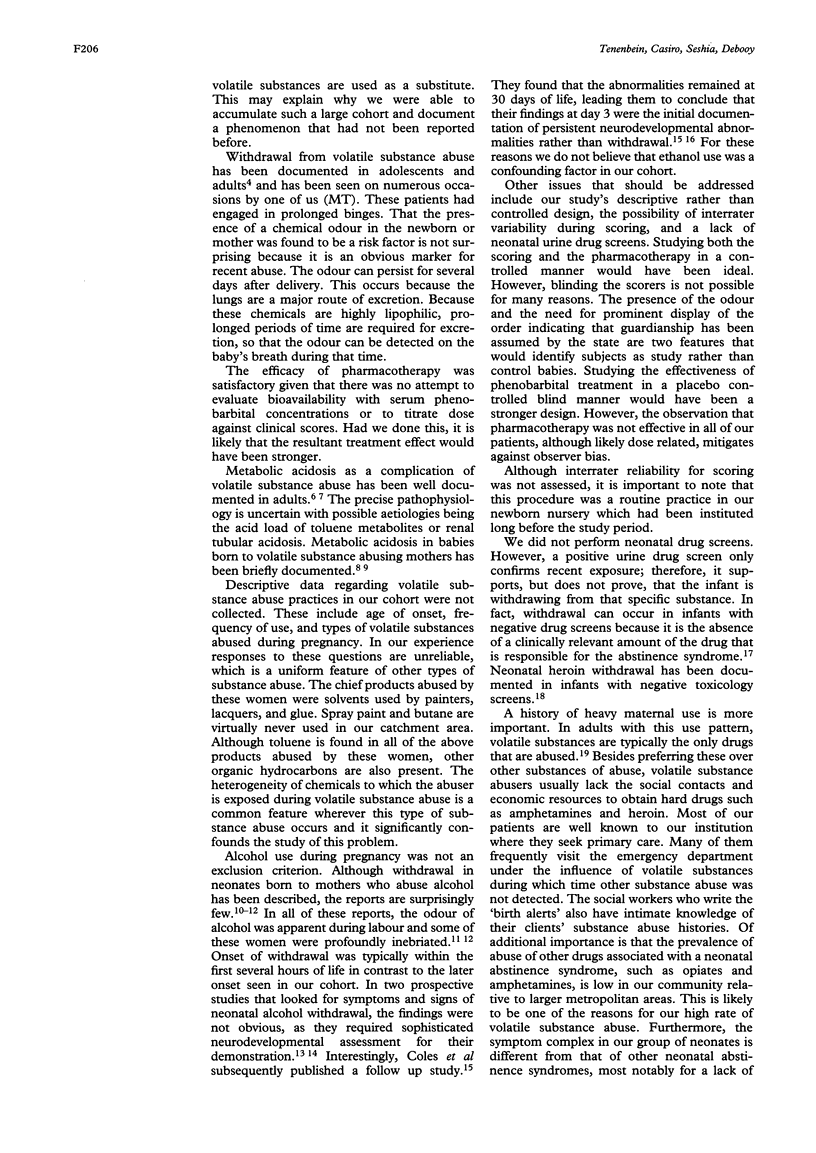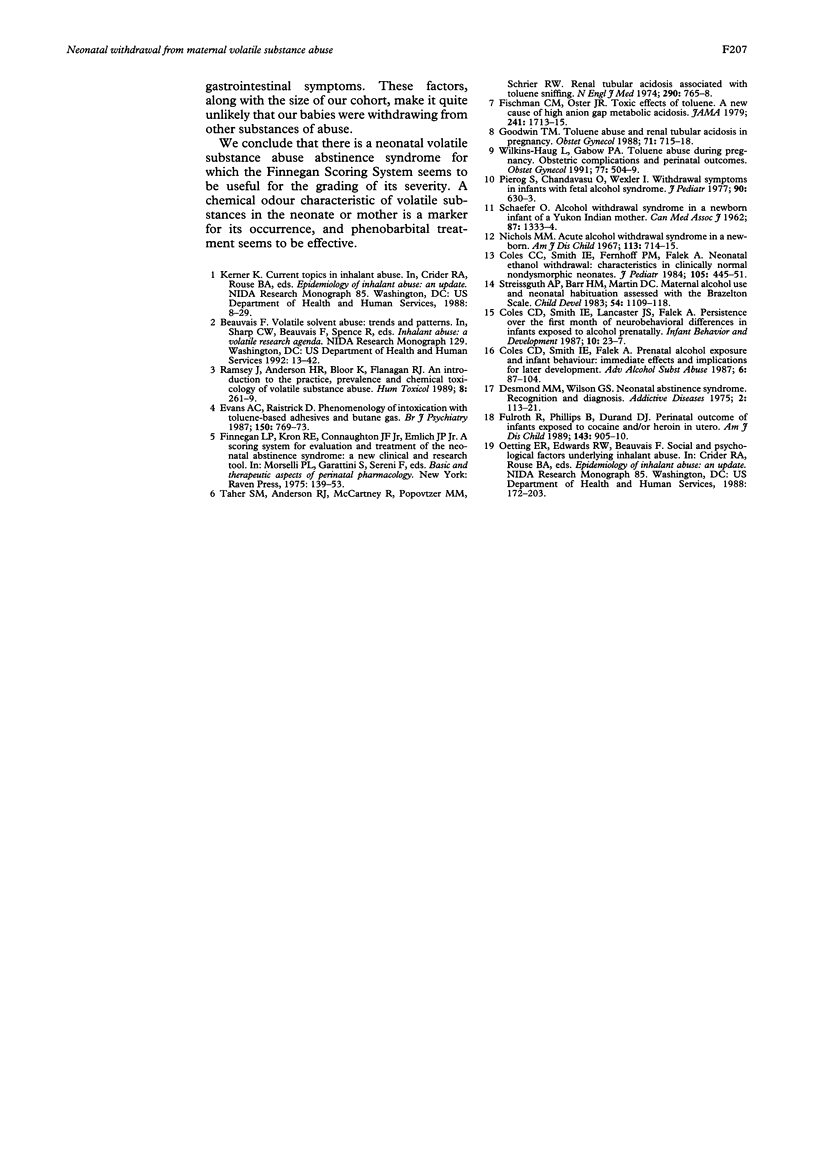Abstract
AIM: To determine whether neonates born to mothers who are volatile substance abusers are at risk for an abstinence syndrome. METHODS: A consecutive sample of infants born to volatile substance abusing mothers was studied over four years, in a university affiliated medical centre with a variable mix of primary, secondary, and tertiary care patients. Infants were clinically scored with the Finnegan Neonatal Abstinence Scoring System. Those who fulfilled a priori scoring criteria were treated with phenobarbital and scoring was continued. RESULTS: There were 48 babies of whom 32 fulfilled the criteria for pharmacotherapy. All eight babies with the characteristic odour, and 15 of the 21 born to mothers with that odour, fulfilled these criteria. The typical symptoms were excessive and high pitched cry, sleeplessness, hyperactive Moro reflex, tremor, hypotonia, and poor feeding. Mean age of onset of treatment was 27.1 hours and mean duration was 5.8 days. Treatment was judged effective in 17 of 27, while benefit was borderline in three and absent in seven. CONCLUSIONS: It is suggested that there is an identifiable neonatal volatile substance abuse abstinence syndrome. The characteristic chemical odour in the neonate or mother is a marker for its occurrence, and phenobarbital treatment seems to be effective. The Finnegan Scoring System seems to be useful for grading its severity.
Full text
PDF



Selected References
These references are in PubMed. This may not be the complete list of references from this article.
- Coles C. D., Smith I. E., Falek A. Prenatal alcohol exposure and infant behavior: immediate effects and implications for later development. Adv Alcohol Subst Abuse. 1987 Summer;6(4):87–104. doi: 10.1300/J251v06n04_07. [DOI] [PubMed] [Google Scholar]
- Coles C. D., Smith I. E., Fernhoff P. M., Falek A. Neonatal ethanol withdrawal: characteristics in clinically normal, nondysmorphic neonates. J Pediatr. 1984 Sep;105(3):445–451. doi: 10.1016/s0022-3476(84)80027-x. [DOI] [PubMed] [Google Scholar]
- Desmond M. M., Wilson G. S. Neonatal abstinence syndrome: Recognition and diagnosis. Addict Dis. 1975;2(1-2):113–121. [PubMed] [Google Scholar]
- Evans A. C., Raistrick D. Phenomenology of intoxication with toluene-based adhesives and butane gas. Br J Psychiatry. 1987 Jun;150:769–773. doi: 10.1192/bjp.150.6.769. [DOI] [PubMed] [Google Scholar]
- Fischman C. M., Oster J. R. Toxic effects of toluene: a new cause of high anion gap metabolic acidosis. JAMA. 1979 Apr 20;241(16):1713–1715. doi: 10.1001/jama.241.16.1713. [DOI] [PubMed] [Google Scholar]
- Fulroth R., Phillips B., Durand D. J. Perinatal outcome of infants exposed to cocaine and/or heroin in utero. Am J Dis Child. 1989 Aug;143(8):905–910. doi: 10.1001/archpedi.1989.02150200057018. [DOI] [PubMed] [Google Scholar]
- Goodwin T. M. Toluene abuse and renal tubular acidosis in pregnancy. Obstet Gynecol. 1988 May;71(5):715–718. [PubMed] [Google Scholar]
- Nichols M. M. Acute alcohol withdrawal syndrome in a newborn. Am J Dis Child. 1967 Jun;113(6):714–715. doi: 10.1001/archpedi.1967.02090210128015. [DOI] [PubMed] [Google Scholar]
- Oetting E. R., Edwards R. W., Beauvais F. Social and psychological factors underlying inhalant abuse. NIDA Res Monogr. 1988;85:172–203. [PubMed] [Google Scholar]
- Pierog S., Chandavasu O., Wexler I. Withdrawal symptoms in infants with the fetal alcohol syndrome. J Pediatr. 1977 Apr;90(4):630–633. doi: 10.1016/s0022-3476(77)80387-9. [DOI] [PubMed] [Google Scholar]
- Ramsey J., Anderson H. R., Bloor K., Flanagan R. J. An introduction to the practice, prevalence and chemical toxicology of volatile substance abuse. Hum Toxicol. 1989 Jul;8(4):261–269. doi: 10.1177/096032718900800403. [DOI] [PubMed] [Google Scholar]
- SCHAEFER O. Alcohol withdrawal syndrome in a newborn infant of a Yukon Indian mother. Can Med Assoc J. 1962 Dec 22;87:1333–1334. [PMC free article] [PubMed] [Google Scholar]
- Streissguth A. P., Barr H. M., Martin D. C. Maternal alcohol use and neonatal habituation assessed with the Brazelton scale. Child Dev. 1983 Oct;54(5):1109–1118. [PubMed] [Google Scholar]
- Taher S. M., Anderson R. J., McCartney R., Popovtzer M. M., Schrier R. W. Renal tubular acidosis associated with toluene "sniffing". N Engl J Med. 1974 Apr 4;290(14):765–768. doi: 10.1056/NEJM197404042901403. [DOI] [PubMed] [Google Scholar]
- Wilkins-Haug L., Gabow P. A. Toluene abuse during pregnancy: obstetric complications and perinatal outcomes. Obstet Gynecol. 1991 Apr;77(4):504–509. [PubMed] [Google Scholar]


